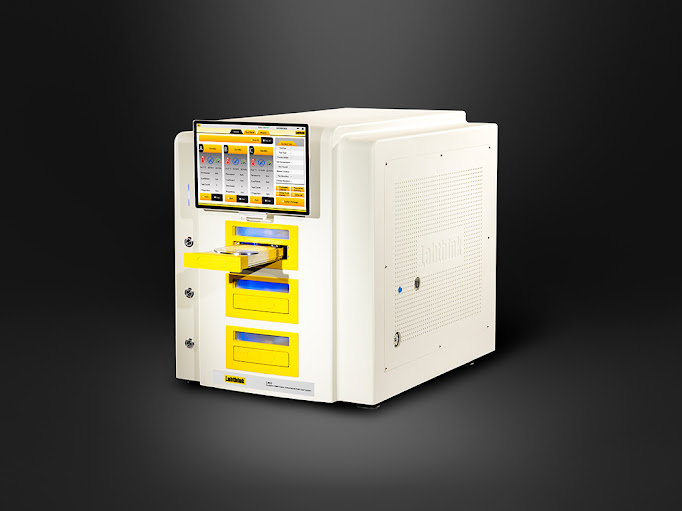Crispy snacks are a universally loved treat, and they come in a vast array of forms. The satisfying snap of a potato chip, the airy pop of popcorn, the salty bite of a pretzel – these are the hallmarks of a beloved crispy snack. Maintaining crispy snack perfection from factory to consumer relies on precise packaging and quality control.
Crispy snacks are vulnerable to moisture and oxygen. Moisture turns them soggy, oxygen renders them rancid, and physical pressure crushes them into crumbs. Thus, the packaging must act as an impenetrable shield, safeguarding the snack's integrity. This means the packaging must protect the snacks from factors like moisture, oxygen, and physical damage.
Crispy snack packaging commonly utilizes multi-layered films like MET PET/BOPP for light and oxygen barriers, and PE for moisture protection. EVOH and aluminum foil provide superior defense for sensitive snacks. Stand-up pouches offer convenience using these films, while coated paper serves niche applications.
To guarantee packaging protects the snack's crunch, rigorous testing is essential. Barrier Testing involves precise measurement of moisture vapor transmission rate (MVTR) and oxygen transmission rate (OTR) through the packaging material, utilizing specialized chambers and sensors. These simulations replicate real-world storage conditions, quantifying how effectively the packaging resists moisture and oxygen ingress, crucial factors in preventing sogginess and rancidity. Subsequent tests include seal strength test which ensures robust seams to prevent leaks and maintain airtightness and tensile strength test measuring tear resistance for transport durability.
Labthink C403H Oxygen /Water Vapor Transmission Rate Test System is based on the testing principle of Coulometric oxygen sensor and infrared water vapor sensor. It is designed and manufactured according to ASTM D3985、ASTM F1249,ISO 15106-2 and other relevant standards to provide high precision and high efficiency oxygen and water vapor transmission rate tests for high and medium gas barrier materials. It is suitable for testing the oxygen and water vapor transmission performance of films, sheets and related materials in the fields of food, medicine, medical devices, daily chemicals, photovoltaic, electronic and many others.
ASTM D3985, ASTM F1307, GB/T 19789, GB/T 31354, DIN 53380-3, JIS K7126-2-B, ASTM F1249, ISO 15106-2, etc.
Test Parameters
As consumer demands evolve, so too does packaging technology. Sustainable materials, enhanced barrier properties, and intelligent packaging solutions are on the horizon. By maintaining a relentless focus on quality control, manufacturers can ensure that every bag, pouch, or container delivers the satisfying crunch that consumers crave. In the world of crispy snacks, the packaging isn't just a wrapper; it's a vital component of the eating experience.
Crispy snacks are vulnerable to moisture and oxygen. Moisture turns them soggy, oxygen renders them rancid, and physical pressure crushes them into crumbs. Thus, the packaging must act as an impenetrable shield, safeguarding the snack's integrity. This means the packaging must protect the snacks from factors like moisture, oxygen, and physical damage.
Crispy snack packaging commonly utilizes multi-layered films like MET PET/BOPP for light and oxygen barriers, and PE for moisture protection. EVOH and aluminum foil provide superior defense for sensitive snacks. Stand-up pouches offer convenience using these films, while coated paper serves niche applications.
To guarantee packaging protects the snack's crunch, rigorous testing is essential. Barrier Testing involves precise measurement of moisture vapor transmission rate (MVTR) and oxygen transmission rate (OTR) through the packaging material, utilizing specialized chambers and sensors. These simulations replicate real-world storage conditions, quantifying how effectively the packaging resists moisture and oxygen ingress, crucial factors in preventing sogginess and rancidity. Subsequent tests include seal strength test which ensures robust seams to prevent leaks and maintain airtightness and tensile strength test measuring tear resistance for transport durability.
Labthink C403H Oxygen /Water Vapor Transmission Rate Test System is based on the testing principle of Coulometric oxygen sensor and infrared water vapor sensor. It is designed and manufactured according to ASTM D3985、ASTM F1249,ISO 15106-2 and other relevant standards to provide high precision and high efficiency oxygen and water vapor transmission rate tests for high and medium gas barrier materials. It is suitable for testing the oxygen and water vapor transmission performance of films, sheets and related materials in the fields of food, medicine, medical devices, daily chemicals, photovoltaic, electronic and many others.
Reference Standards
ASTM D3985, ASTM F1307, GB/T 19789, GB/T 31354, DIN 53380-3, JIS K7126-2-B, ASTM F1249, ISO 15106-2, etc.
| Parameter/Model | Model C403H | |
|---|---|---|
| OTR Test Range | cc/(m2·day) (Standard area 50cm2) | 0.01 ~ 200 |
| cc/(m2·day) (MASK area 5cm2) | 0.2 ~ 2000 (Optional) | |
| cc/(m2·day) (MASK area 1cm2) | 1 ~ 10000 (Optional) | |
| OTR Resolution | cc/(m2·day) | 0.0001 |
| OTR Repeatability | cc/(m2·day) | 0.01 or 1%, whichever is greater |
| WVTR Test Range | g/(m2·day) (Standard area 50cm2) | 0.005 ~ 40 |
| g/(m2·day) (MASK area 5cm2) | 0.2 ~ 400 (Optional) | |
| g/(m2·day) (MASK area 1cm2) | 1 ~ 2000 (Optional) | |
| WVTR Resolution | g/(m2·day) | 0.0001 |
| WVTR Repeatability | g/(m2·day) | 0.005 or 2%, whichever is greater |
| Temperature range | °C | 15 - 50 5 – 60 (Customized) |
| Temperature fluctuation | °C | ±0.05 |
| Humidity range | %RH (Within standard temperature range) | 0%, 5 - 90%±2% |
| Extended functions | GP-01 Gas Purification Unit | Optional |
| DataShieldTM Note3 | Optional | |
| Computer System required by GMP | Optional | |
| CFR21 Part11 | Optional | |
As consumer demands evolve, so too does packaging technology. Sustainable materials, enhanced barrier properties, and intelligent packaging solutions are on the horizon. By maintaining a relentless focus on quality control, manufacturers can ensure that every bag, pouch, or container delivers the satisfying crunch that consumers crave. In the world of crispy snacks, the packaging isn't just a wrapper; it's a vital component of the eating experience.


Comments
Post a Comment